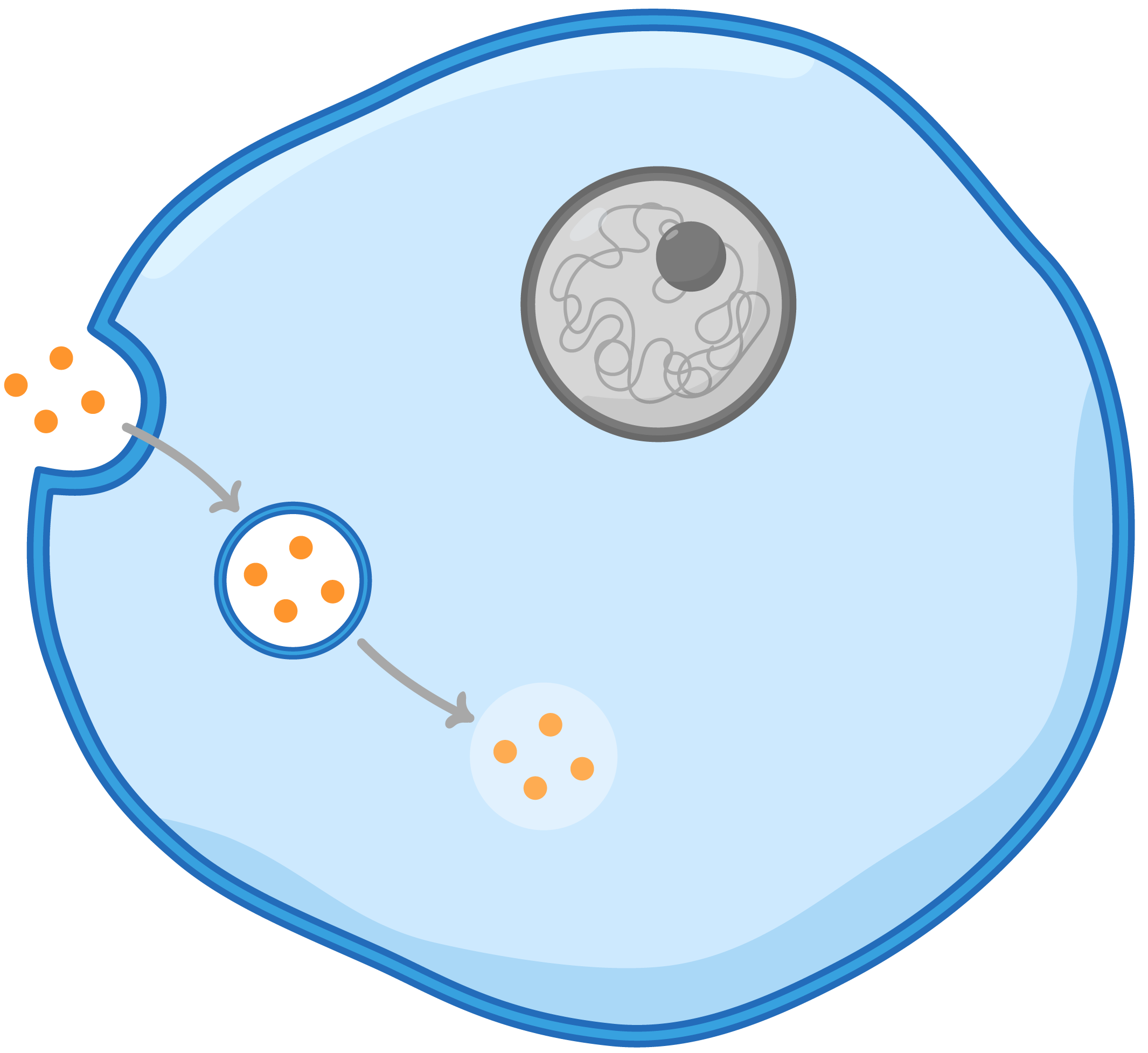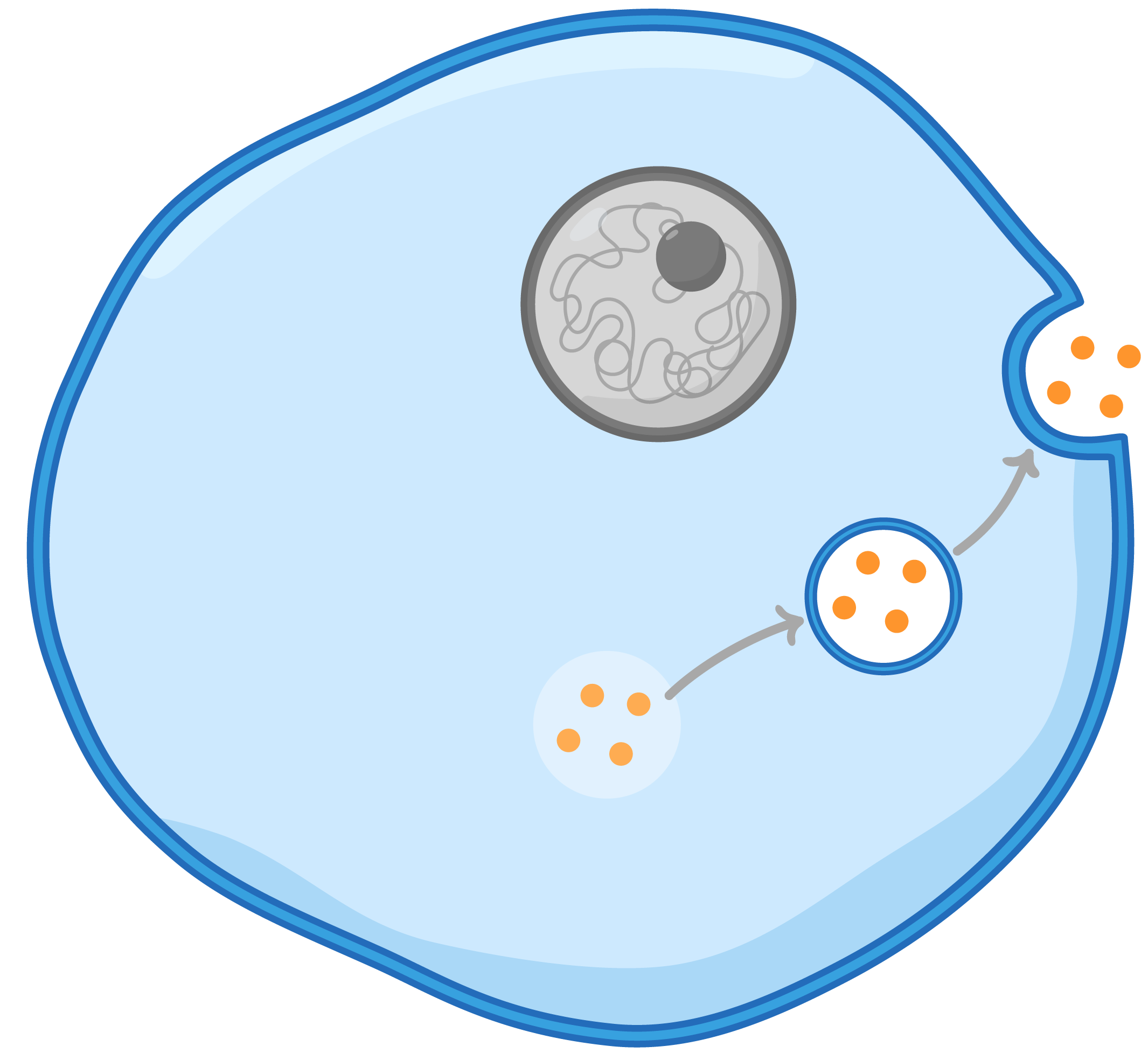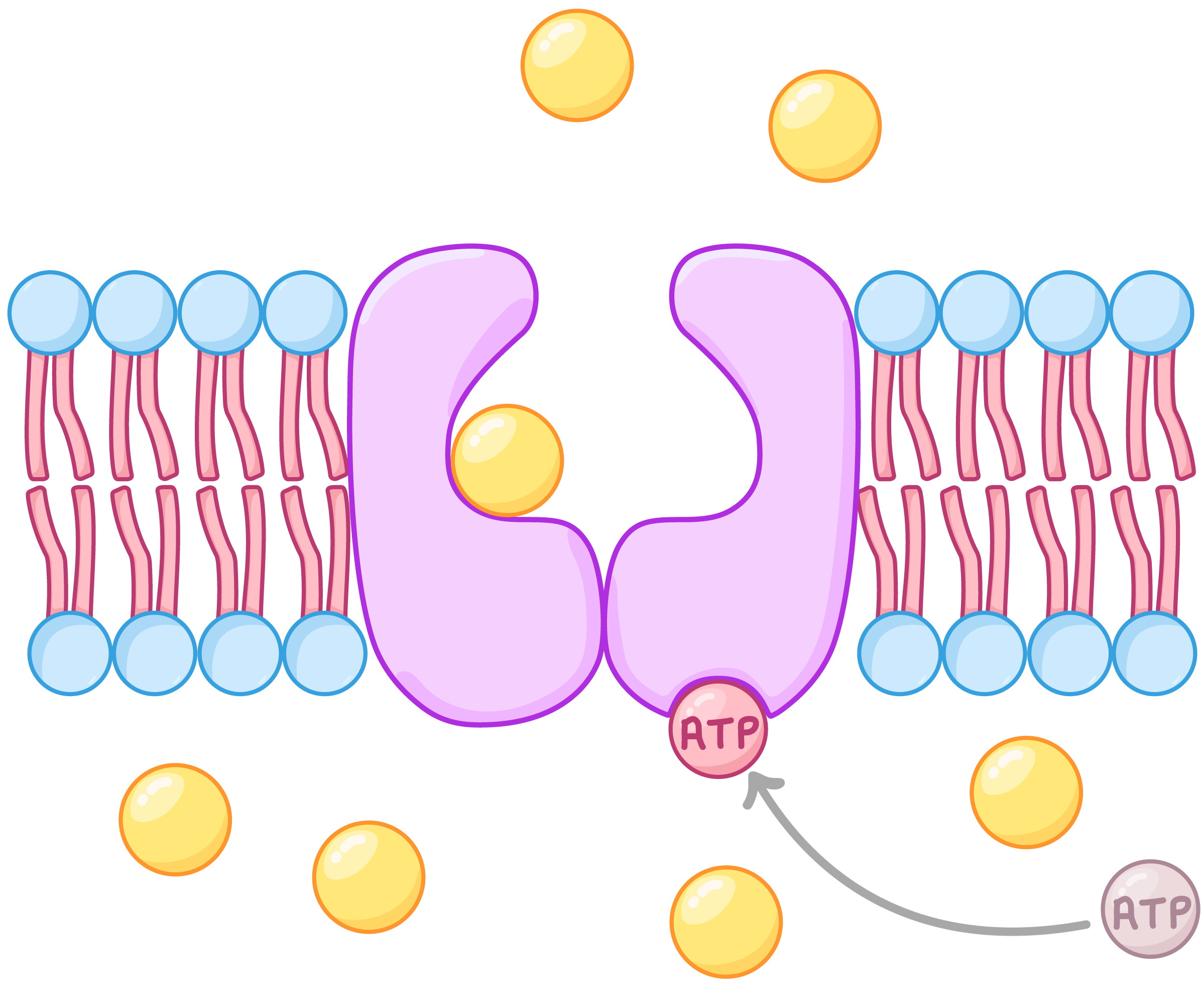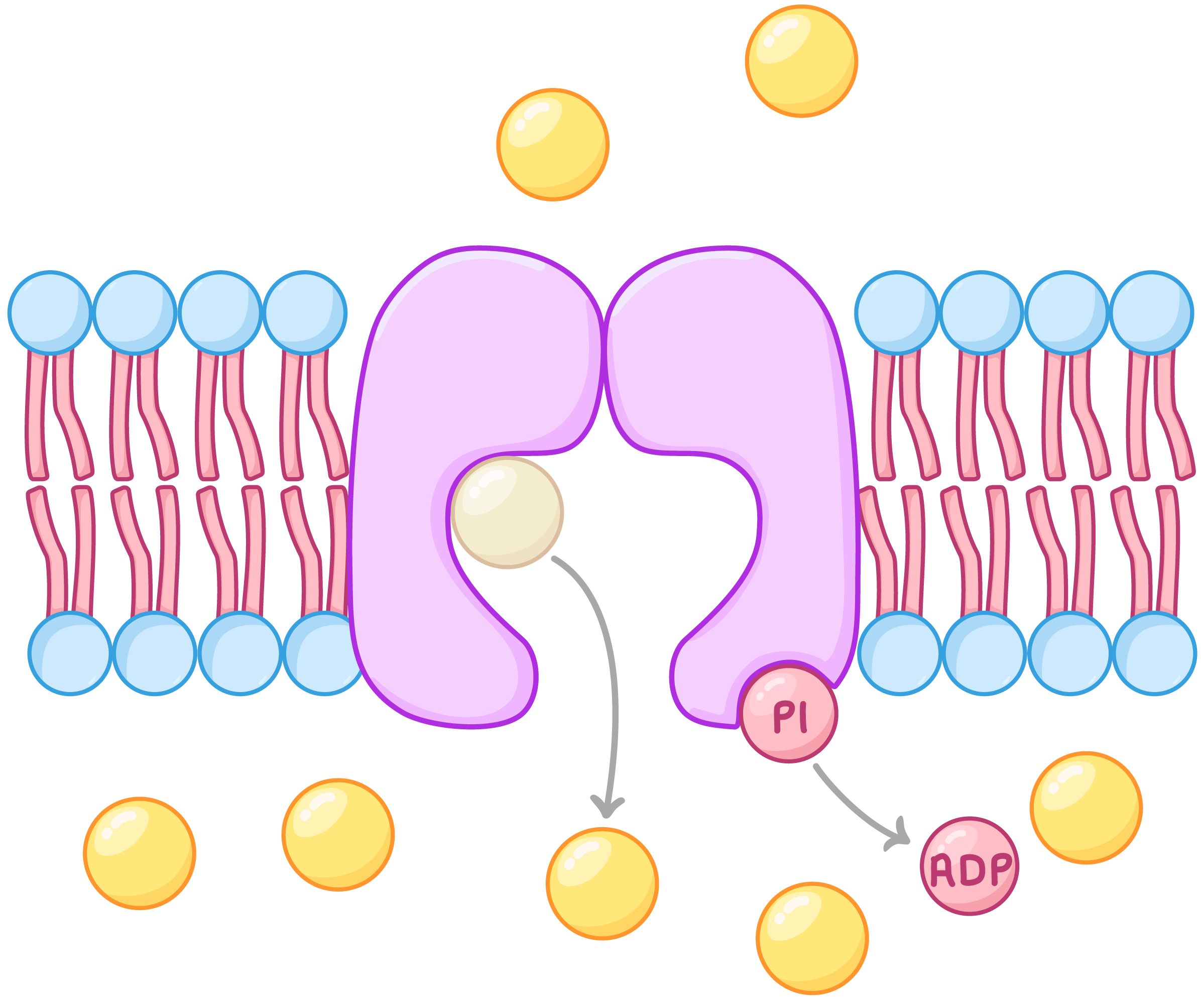Active Transport
This lesson covers:
- The process of active transport
- How different factors affect the rate of active transport
- The process of endocytosis
- The process of exocytosis
Active transport Active transport is the movement of particles from an area of lower concentration to an area of higher concentration. This process requires energy from respiration in the form of ATP.  |
Energy is needed as particles move up (or against) a concentration gradient. As a result, active transport is described as an active process. |
Carrier proteins Like facilitated diffusion, active transport involves the use of carrier proteins to transport molecules or ions across membranes. The process works in the following way: |

|
Factors affecting the rate of active transport There are four key factors that affect the rate of active transport:
|
Bulk transport Large molecules such as enzymes or hormones cannot be transported through channel or carrier proteins. Instead, they are moved into and out of cells using another form of active transport, known as bulk transport. There are two types of bulk transport:
|
Endocytosis Endocytosis is the process in which large molecules, or many molecules at once, are transported into cells. |
 The cell-surface membrane engulfs the materials to form a vesicle which is then moved into the cytoplasm where the materials can be processed. Endocytosis takes two forms:
|
Exocytosis Exocytosis is the process in which large molecules, or many molecules at once, are transported out of cells. |
 Vesicles (mostly formed by the Golgi apparatus) move towards and fuse with the cell-surface membrane where materials are released outside the cell. |


